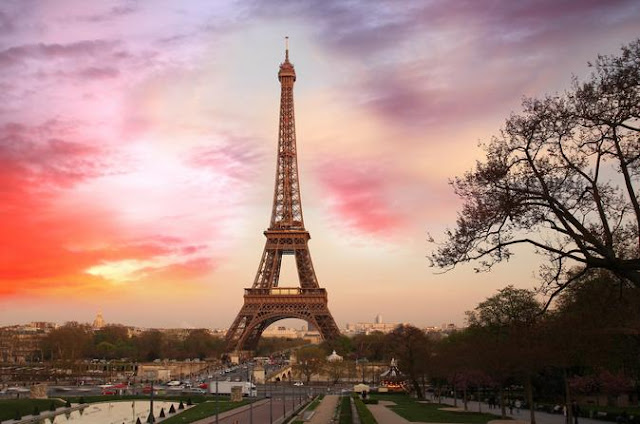In 1889, Paris facilitated an Exposition Universelle (World's Fair) to stamp the 100-year commemoration of the French Revolution. More than 100 craftsmen submitted contending plans for a landmark to be based on the Champ-de-Mars, situated in focal Paris, and fill in as the article's passageway. The commission was allowed to Eiffel et Compagnie, a counseling and development firm possessed by the acclaimed connect developer, modeler and metals master Alexandre-Gustave Eiffel. While Eiffel himself frequently gets full acknowledgment for the landmark that bears his name, it was one of his workers a basic specialist named Maurice Koechlin who concocted and calibrated the idea. Quite a while prior, the match had worked together on the Statue of Liberty's metal armature.

The base mainstays of the Eiffel Tower are situated with the four purposes of the compass. Eiffel apparently rejected Koechlin's unique arrangement for the tower, educating him to include more fancy twists. The last plan called for more than 18,000 bits of puddle iron, a sort of created iron utilized as a part of development, and 2.5 million bolts. A few hundred specialists put in two years collecting the system of the notable grid tower, which at its initiation in March 1889 stood almost 1,000 feet high and was the tallest structure on the planet a qualification it held until the finish of New York City's Chrysler Building in 1930. (In 1957, a recieving wire was included that expanded the structure's stature by 65 feet, making it taller than the Chrysler Building however not the Empire State Building, which had outperformed its neighbor in 1931.) Initially, just the Eiffel Tower's second-floor stage was interested in the general population; later, every one of the three levels, two of which now highlight eateries, would be reachable by stairway or one of eight lifts.
A great many guests amid and after the World's Fair wondered about Paris' recently raised structural ponder. Not the majority of the city's occupants were as excited, in any case: Many Parisians either dreaded it was fundamentally unsound or thought of it as a blemish. The author Guy de Maupassant, for instance, professedly abhorred the tower so much that he frequently had lunch in the eatery at its base, the main vantage point from which he could totally abstain from witnessing its approaching outline.
Initially planned as an impermanent show, the Eiffel Tower was practically torn down and rejected in 1909. City authorities picked to spare it in the wake of perceiving its incentive as a radiotelegraph station. Quite a long while later, amid World War I, the Eiffel Tower blocked foe radio correspondences, handed-off dirigible alarms and was utilized to dispatch crisis troop fortifications. It got away annihilation a moment time amid World War II: Hitler at first requested the decimation of the city's most esteemed image, however the charge was never completed. Likewise amid the German control of Paris, French resistance contenders broadly cut the Eiffel Tower's lift links so that the Nazis needed to climb the stairs.

Throughout the years, the Eiffel Tower has been the site of various prominent tricks, stately occasions and even logical analyses. In 1911, for example, the German physicist Theodor Wulf utilized an electrometer to distinguish larger amounts of radiation at its top than at its base, watching the impacts of what are currently called grandiose beams. The Eiffel Tower has additionally enlivened more than 30 imitations and comparative structures in different urban communities around the globe.
Presently a standout amongst the most conspicuous structures on the planet, the Eiffel Tower experienced a noteworthy facelift in 1986 and is repainted like clockwork. It invites a greater number of guests than whatever other paid landmark on the planet an expected 7 million individuals for each year. About 500 representatives are in charge of its day by day operations, working in its eateries, keeping an eye on its lifts, guaranteeing its security and coordinating the excited group running the tower's stages to appreciate all encompassing perspectives of the City of Lights.
Comments
Post a Comment